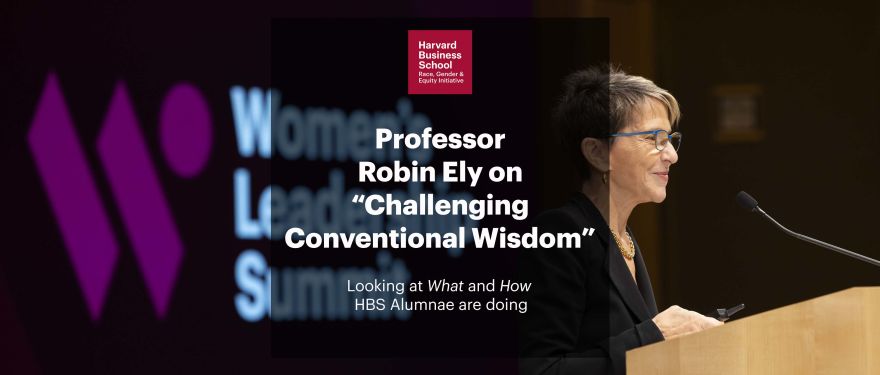During Women’s History Month, it’s become a tradition for the Race, Gender and Equity Initiative to reflect on how far women have come, and how far there is still yet to go. As gender scholars, the moment is ripe for us to delve into current research that unpacks the state of working women today. One of 2024’s most captivating headlines came from McKinsey’s Women in the Workplace Report, which reported a statistic that, at our current rate of progress, it would take at least 50 years for all women—across intersections with other identities—to achieve parity with men. So, are women stagnating at work?
RGE’s faculty co-chair, Robin J. Ely, has researched gender and work for decades, spearheading many research projects examining the state of women’s careers and status of women at work. One ongoing project, the Life and Leadership after HBS longitudinal study, has been tracking HBS alumni’s personal and professional realities since 2012. The results of this study offer insight on a number of fronts, from how dual-career couples manage career and family to women’s professional trajectories to the impact of the Covid pandemic on work patterns. One important contribution of this study is in illuminating how gender disparities persist even among this population, where everyone has sought out a top professional program and holds a prestigious degree.
In addition to tracking how HBS alumnae are faring personally and professionally, the study’s findings offer important data about the following exigent questions:
- Do women lack personal attributes requisite for career success?
- Do women’s careers take a backseat to their (male) partners’?
- Do women (still) bear disproportionate responsibility for childcare?
Are women opting out?
Women still slightly lag men on standard measures of workplace success. Women, particularly Black women and Latinas, are underrepresented at the C-Suite level, on for-profit boards, among founders, and in roles with profit-and-loss responsibilities. But for HBS alumnae, the margins for these differences have shrunk significantly [CS1] over the last decade. Despite this progress, the belief that women are less invested in their careers than men is widely held. We examined common myths that perpetuate this idea:
- Myth: Highly-educated women “opt out” of the workforce in droves.
- Reality: Only about 4% of HBS women graduates (compared to 1% of men), are out of the workforce specifically to care for children.
- In addition, other research has shown that when professional women do step out of the workforce, their decision is typically driven by experiences of being devalued or stymied in their careers after having children — “pushed out” may be the more accurate term.
- Myth: Women lack the personal attributes to succeed.
- Reality: When asked about their self-identity, HBS women are no less likely than their male peers to identify as leaders.
- Myth: Women lack self-confidence as compared to men.
- Reality: Both men and women experience insecurity, but they respond to it differently. For instance, men may opt to speak up if they are worried about others seeing them as smart and capable (”I can’t let this meeting end without my boss knowing I have a view!”), while women may opt to stay silent (”I shouldn’t chime in without being certain my view is correct!”). In both cases, impression management is the goal, but men’s behavior may be perceived favorably and women’s interpreted as under-confident.
- Myth: Women don’t value work as much as they value family.
- Reality: Survey data shows that HBS women and men both rank their personal and family relationships as most important to them, followed by overall quality of life and career satisfaction. Much research has demonstrated that systemic inequities - rather than women’s choices - account for gender gaps in leadership roles.







